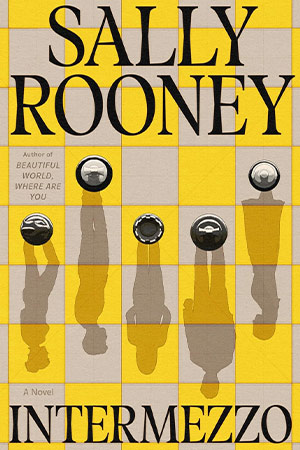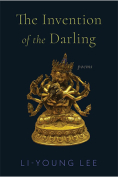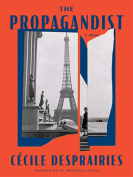Intermezzo: A Novel by Sally Rooney
 New York. Farrar, Straus and Giroux. 2024. 464 pages.
New York. Farrar, Straus and Giroux. 2024. 464 pages.
After a three-year wait, Sally Rooney’s fourth novel does not continue to explore female protagonists’ emotional struggles. Instead, Intermezzo centers on Peter Koubek, a successful Dublin lawyer, and his younger brother, Ivan, who is a socially awkward chess prodigy. At first glance, the brothers could not be more different: thirty-two-year-old Peter radiates charming confidence when juggling two relationships; Ivan, in his early twenties, has plateaued in his career and is now entangled in an unlikely romance with Margaret, an older woman striving to break from her turbulent past. From the beginning, their father’s funeral sets the stage for the estranged brothers and their inner lives to clash, prompting a cautious attempt to reconnect with the people and relationships they fear to abandon.
In many aspects, Intermezzo marks a breakthrough for Rooney’s writing. Beyond the trickiness of romance, she renders a grander contemplation of the essence of family, the varying modes of interacting with the external world, and the anxieties that arise from reconsidering the meaning of existence. As for the style, Rooney’s bold experimentation is evident in Peter’s storyline. A reminder of the Joycean stream of consciousness, this fragmented discourse not only captures the state of the unconsoled but also echoes Leopold Bloom’s panoramic revelation of his contemporaries’ mental voidness. It’s simply impossible not to be amazed by Rooney’s masterly depiction of the complexity of humanity.
This novel’s framework naturally invokes a comparison to the competition between the two couples in Beautiful World, Where Are You (2021). However, while Peter’s narrative stands out, it inadvertently outshines other characters, especially his autistic sibling. Ivan’s section could have provided a more incisive lens. Yet his voice is often restrained, with many of his ideas relayed through Margaret’s rather bland wordings. This strategy thus creates an imbalanced depth in characterizing the older brother, and readers’ expectations for a close narrative rivalry may end up falling flat.
Intermezzo is inarguably Rooney’s most ambitious and compelling work to date. A chess tactic or a musical composition, the multilayered title itself suggests the necessary adjustments individuals must undergo before crucial life changes. In this sense, “intermezzo” is also an accurate assessment of Rooney’s evolving trajectory. Since her debut, the author has been regarded by many as inheriting the literary tradition of George Eliot and the Brontës. In view of her audacious departure from the past, readers can surely anticipate even more exciting moves in the future.
Siyu Cao
Shanghai International Studies University






























